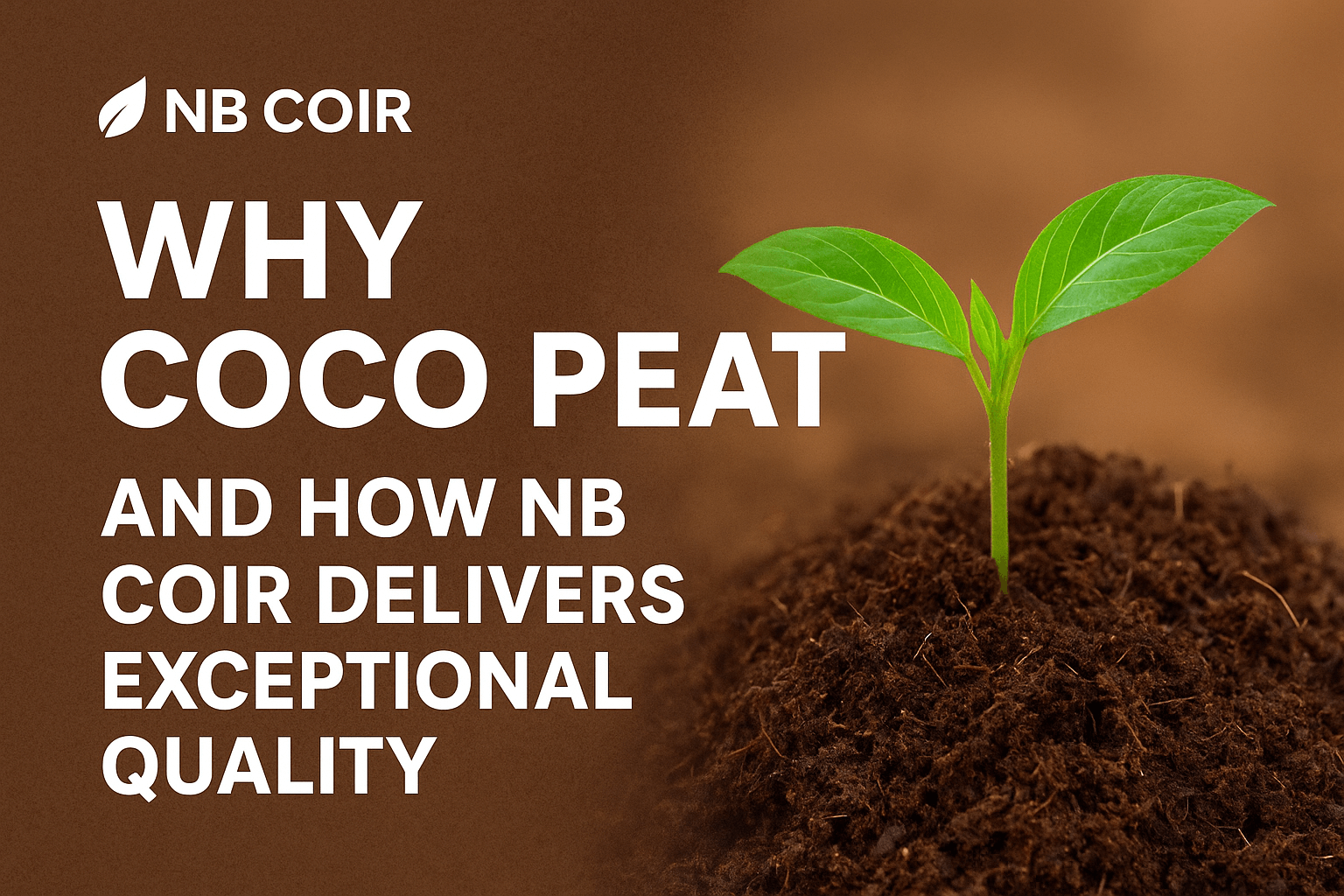Why Coco Peat is the Grower’s Secret Weapon — and How NB Coir Delivers Exceptional Quality

If you’ve ever struggled with inconsistent soil media, waterlogging, or slow root growth, you’re not alone. Many growers — from hobbyists to commercial operations — are discovering coco peat (also known as coco coir) is a high-performance, sustainable alternative to traditional substrates. But not all coco peat is created equal.
That’s where NB Coir comes in. With nearly two decades of experience, robust certifications, and a global footprint, NB Coir is turning heads in the horticulture world. Let’s dive in.
What Is Coco Peat & Why It’s Gaining Popularity
Coco peat is derived from the fibrous husks of coconuts. Once the outer husks are removed, the leftover fibers are processed, washed, buffered, and compressed into a usable growing medium. The result? A substrate that excels at:
- Retaining moisture — It can absorb many times its own weight in water, making it excellent for maintaining hydration.
- Providing aeration — The fiber structure allows for good oxygen flow to roots.
- Minimizing disease risk — Properly processed coco peat is generally free from pathogens and harmful salts.
- Being eco-friendly — It’s a by-product of coconut processing, turning waste into a resource.
Growers often pair coco peat with perlite, compost, or other media to fine-tune drainage and nutrient capacity.
The Many Forms of Coco Peat & Their Uses
Depending on application, you can find coco peat in:
- Bricks / blocks (5 kg, 25 kg, etc.) — easy to ship, compact, ideal for mixing.
- Coco discs / pellets — useful for seed starting or small-scale container use.
- Grow bags / planter bags — ready-made systems for propagation or container production.
- Mix fiber bales — raw fiber for blending into custom mixes.
Each format has pros depending on scale, logistics, and usage.
Why NB Coir Stands Out
With so many coco peat suppliers, what makes NB Coir a top-tier choice? Here’s a breakdown:
- Deep Industry Experience
Since 2006, NB Coir has specialized in coco peat and compressed coir products. Over time, they’ve refined their processes to deliver consistent quality. - Global Reach & Local Presence
They export to Australia, New Zealand, the UAE & Gulf, Finland, Russia, and more.
Local agents in those regions provide trust, faster response, and improved logistics. - Strong Quality Assurance
Holding ISO 9001 and GMP certifications, NB Coir underlines adherence to quality standards.
They also highlight eco-certificates and GMP/organic credentials. - Diverse Product Portfolio
From grow bags to discs, bricks, fiber bales, and planters, their selection meets many use cases. - Transparency & Trust
Their site features factory tour videos and YouTube content, giving prospective customers insight into their processes.
Also, publishing contact details per region builds confidence.
Real Results: Using NB Coir in Practice
Although I don’t have direct grower results from their site, you can enrich this section by:
- Interviewing a grower who used NB Coir vs conventional media.
- Showing root development photos (e.g. before/after).
- Highlighting yield increases, water savings, or plant health improvements.
This type of proof is compelling for readers.
Best Practices: How to Use Coco Peat Effectively
To get the most from NB Coir or any coco peat product, keep these tips in mind:
- Pre-soak or Hydrate
Compressed bricks or blocks should be hydrated before use. Use clean water and allow full expansion. - Buffering / Washing
Good coco peat suppliers (such as NB Coir) supply buffered or washed material. If not, wash with a mild calcium/magnesium solution to reduce sodium/potassium salts. - Mix for Drainage
Combine with perlite or pumice if you need faster drainage. For water retention, use more coco peat alone or blended with other moisture-retentive media. - Nutrient Management
Since coco peat holds water well but is low in nutrients, use an appropriate fertilizer or supplement to feed your plants. - Monitor pH
Coco peat tends to be slightly acidic. Regular checks and occasional pH adjustment ensures optimal nutrient uptake. - Re-use & Recycling
Used coco peat can be composted or reconditioned, reducing waste and cost.
